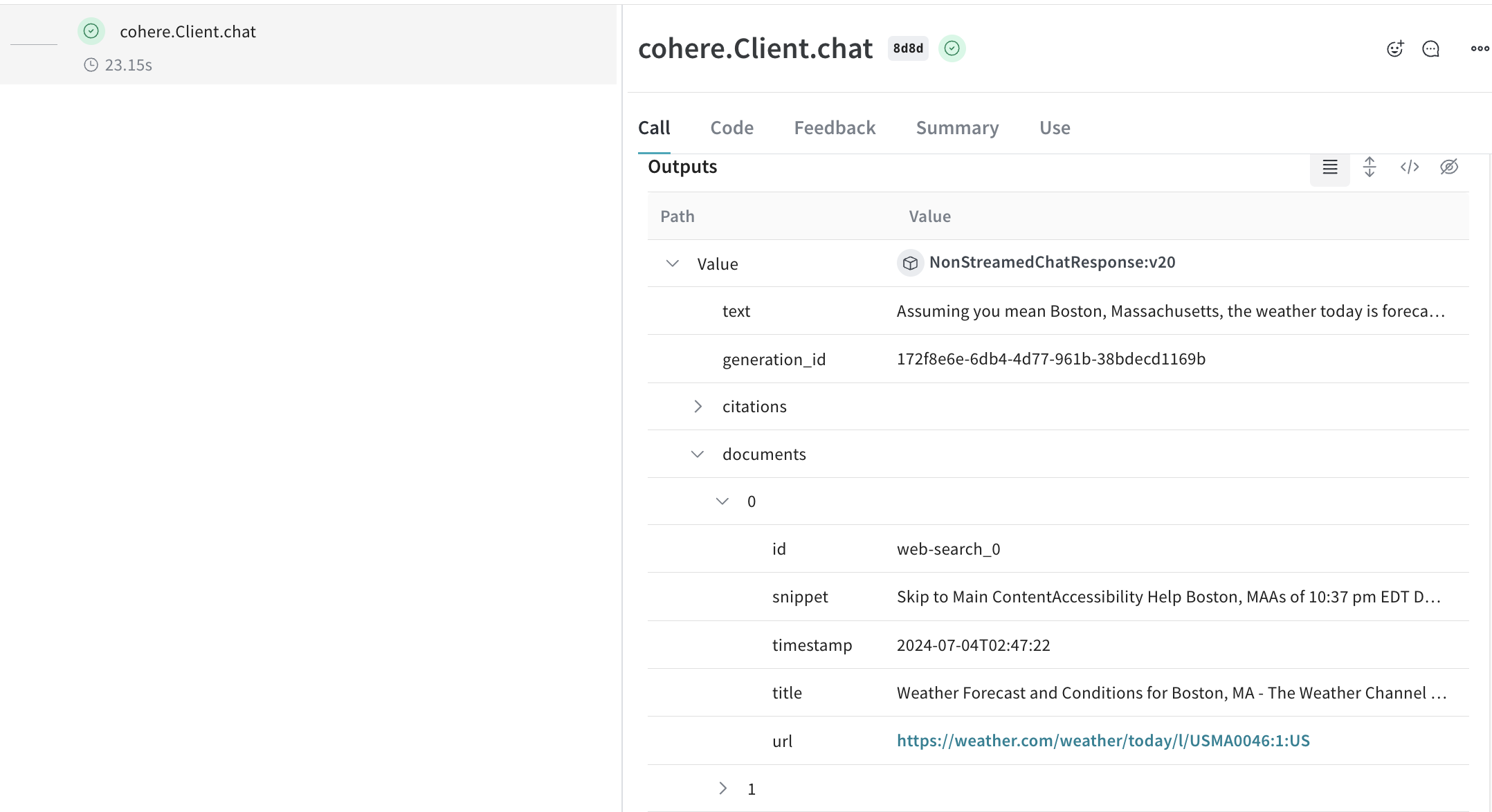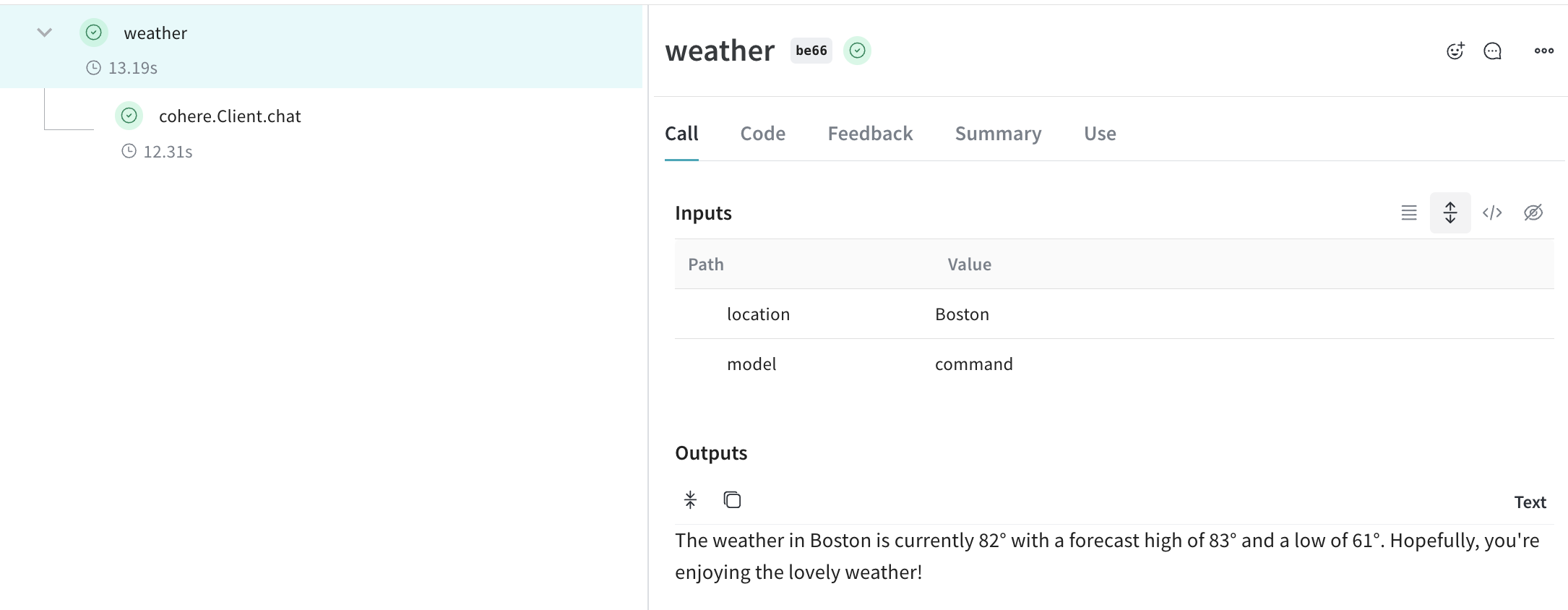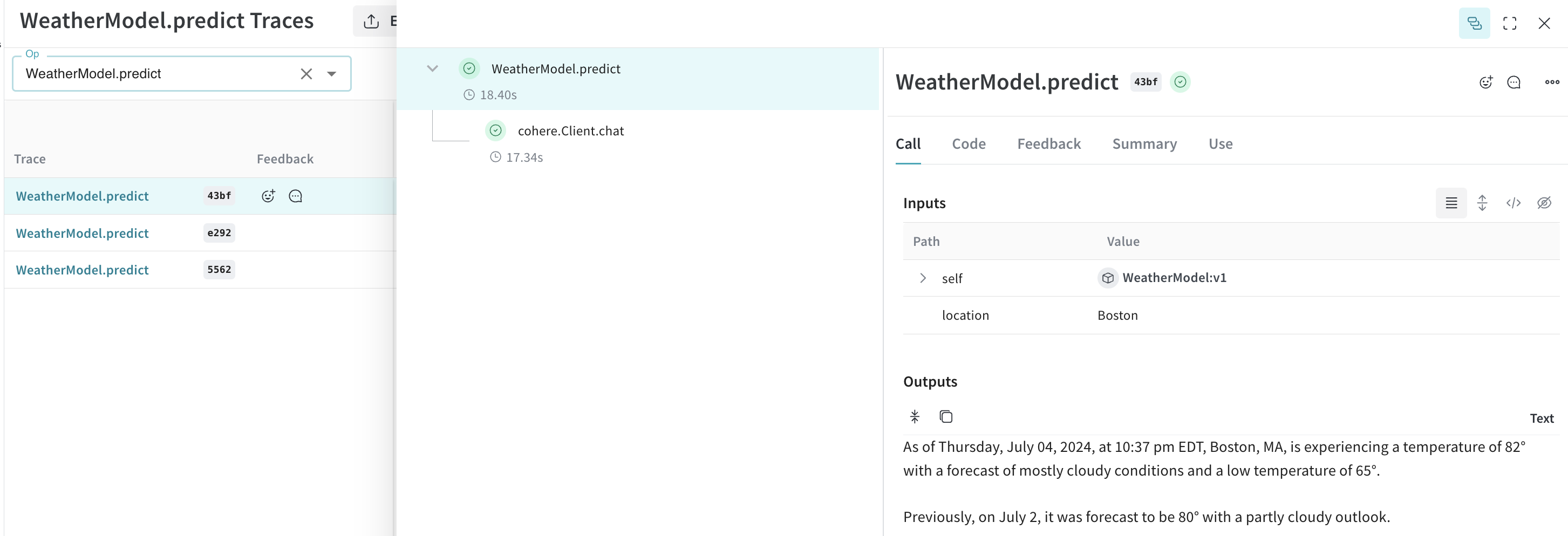Cohere
Weave automatically tracks and logs LLM calls made via the Cohere Python library after weave.init() is called.
Traces
It's important to store traces of LLM applications in a central database, both during development and in production. You'll use these traces for debugging, and as a dataset that will help you improve your application.
Weave will automatically capture traces for cohere-python. You can use the library as usual, start by calling weave.init().
import cohere
import os
import weave
# Use the Cohere library as usual
co = cohere.Client(api_key=os.environ["COHERE_API_KEY"])
weave.init("cohere_project")
response = co.chat(
message="How is the weather in Boston?",
# perform web search before answering the question. You can also use your own custom connector.
connectors=[{"id": "web-search"}],
)
print(response.text)
A powerful feature of cohere models is using connectors enabling you to make requests to other API on the endpoint side. The response will then contain the generated text with citation elements that link to the documents returned from the connector.
We patch the Cohere Client.chat, AsyncClient.chat, Client.chat_stream, and AsyncClient.chat_stream methods for you to keep track of your LLM calls.
Wrapping with your own ops
Weave ops make results reproducible by automatically versioning code as you experiment, and they capture their inputs and outputs. Simply create a function decorated with @weave.op() that calls into Cohere's chat methods, and Weave will track the inputs and outputs for you. Here's an example:
import cohere
import os
import weave
co = cohere.Client(api_key=os.environ["COHERE_API_KEY"])
weave.init("cohere_project")
@weave.op()
def weather(location: str, model: str) -> str:
response = co.chat(
model=model,
message=f"How is the weather in {location}?",
# perform web search before answering the question. You can also use your own custom connector.
connectors=[{"id": "web-search"}],
)
return response.text
print(weather("Boston", "command"))
Create a Model for easier experimentation
Organizing experimentation is difficult when there are many moving pieces. By using the Model class, you can capture and organize the experimental details of your app like your system prompt or the model you're using. This helps organize and compare different iterations of your app.
In addition to versioning code and capturing inputs/outputs, Models capture structured parameters that control your application's behavior, making it easy to find what parameters worked best. You can also use Weave Models with serve, and Evaluations.
In the example below, you can experiment with model and temperature. Every time you change one of these, you'll get a new version of WeatherModel.
import weave
import cohere
import os
weave.init('weather-cohere')
class WeatherModel(weave.Model):
model: str
temperature: float
@weave.op()
def predict(self, location: str) -> str:
co = cohere.Client(api_key=os.environ["COHERE_API_KEY"])
response = co.chat(
message=f"How is the weather in {location}?",
model=self.model,
temperature=self.temperature,
connectors=[{"id": "web-search"}]
)
return response.text
weather_model = WeatherModel(
model="command",
temperature=0.7
)
result = weather_model.predict("Boston")
print(result)


